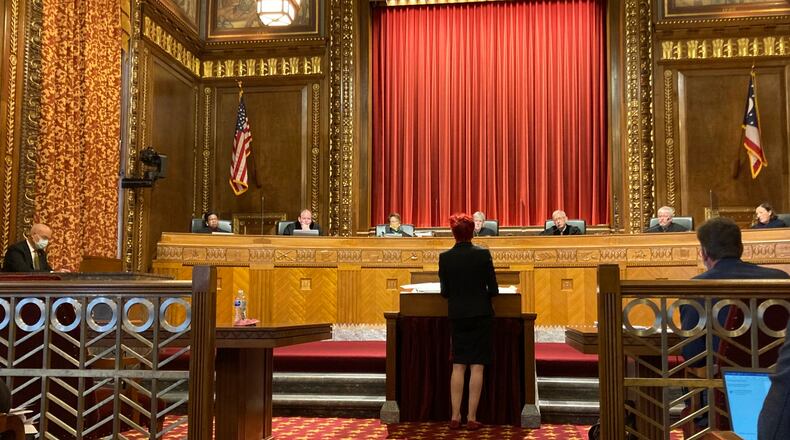Democrats on the commission and voting rights advocates said the maps were unconstitutionally gerrymandered to favor Republicans.
The Supreme Court agreed and gave the commission 10 days to draw new ones that comply with a constitutional amendment Ohio voters overwhelmingly approved in 2015 in an effort to end partisan gerrymandering.
“We hold that the plan is invalid because the commission did not attempt to draw a plan that meets the proportionality standard in (the Ohio Constitution),” the court’s ruling says. “We also conclude that the commission did not attempt to draw a plan that meets the standard in Section 6(A) — that no plan shall be drawn primarily to favor a political party.”
The filing deadline for candidates wanting to run in this year’s legislative races is Feb. 2.
“In light of this ruling and the short timeframe to produce a revised map, the Ohio Redistricting Commission will reconvene on Tuesday, January 18, at 10:00 a.m. in the House Finance Room, Statehouse Room 313,” according to a joint statement released Sunday by the redistricting commission. “To help facilitate the commission’s deliberations, individual commission members are instructing respective staff members to abide by the court’s ruling and begin identifying possible areas to address the court’s ruling regarding Section 6 of the Ohio Constitution.”
“Consistent with the court’s ruling, individual commission members will have access to other commission members’ relevant staff and contractors,” the statement said.
The redistricting commission website at www.redistricting.ohio.gov soon will be available for public comment, and commission meetings will be live streamed on OhioChannel.org.
The seven members of the commission include five Republicans — Governor Mike DeWine, Secretary of State Frank LaRose, State Auditor Keith Faber, House Speaker Robert Cupp, R-Lima and Senate President Matt Huffman, R-Lima — plus two Democrats, in House Minority Leader Allison Russo, D-Upper Arlington, and Senator Vernon Sykes, D-Akron.
Credit: Andrew Welsh-Huggins
Credit: Andrew Welsh-Huggins
The Supreme Court ruling came on Wednesday in the case League of Women Voters of Ohio v. Ohio Redistricting Commission, which consolidated three lawsuits challenging the maps.
In a separate 4-3 decision on Friday, the Ohio Supreme Court overturned the state’s new U.S. congressional district maps, approved by Republicans in the state legislature over Democratic Party opposition. The court said the 15 redrawn U.S. congressional districts violated the Ohio Constitution’s prohibition on partisan gerrymandering, an amendment Ohio voters approved in 2018.
Congressional and legislative maps are redrawn to reflect population shifts after the U.S. Census is updated every 10 years. Ohio will lose one of its current 16 U.S. House districts as a result of 2020 census results. Normally both legislative and Congressional maps are in place for 10 years. But under the terms of the 2015 constitutional amendment, these legislative maps approved without bipartisan support, and now overturned by the court, would have only been in place for four years.
Follow @LynnHulseyDDN on Twitter and Facebook



